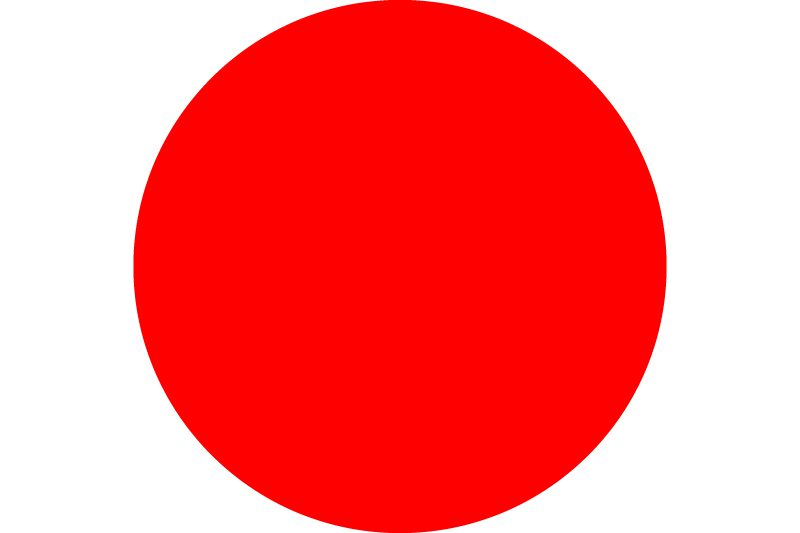niime 百科
Encyclopedia of niime
niime史 第1話
「独立。」
niime History
chapter 1
Independence
「独立。」
chapter 1
Independence

2019 . 01 . 01
niime史 第1話「独立。」
明けましておめでとうございます。
本年も「niime百科」をよろしくお願いいたします。
今日、新年元旦からスタートする、新連載「niime史」。
tamaki niimeの12年間の歩みを、玉木新雌自身が語り下ろします。
「理想を追い求めて私があがいていた頃のこと、今に至る私のルーツを知っておいてもらいたい。」
若いスタッフたちからの質問を受け付けながら今、玉木は社内での講演の機会も設けています。
そもそも、なぜ・どのようにして玉木はこれまでの道のりを辿り、どんな“気づき”を経てtamaki niimeは今日ある姿に構築されてきたのか? 今回は「niime史」第1回。「なぜ独立しようと思ったのか。」をテーマに、若き苦闘の日々を振り返り、その時に得た“気づき”について語ります。
自分はデザイナーではなく、パタンナーだと思っていた
高校の頃、酒井に出会った時に、私はデザイナーじゃない、私はやっぱりパターンだったり仕組みを作ったりする人だと思ったんです。酒井は何もないところから発想が湧いてくる、“0から1を創る”タイプで、きっと彼みたいな人がデザイナーなんだろうなと。将来もし独立してブランドを立ち上げるとなったら、彼がデザイナーで、私はパタンナーの役割だろうなと思ってた。デザイナーというのは持って生まれた才能・感性の部分が大きくて、そこは学べるものではない。私にデザイナーはできないと思ったし、好きなこともパターンだったので、そこを極めるためには学校で習った事だけじゃダメで、実際に仕事してパターンの数をこなして経験を積んでみないと、と。経験値を踏まえれば良いパターンが引けるようになる、そう考えて大手繊維商社であるT社に就職しました。
自分が必要とされない職場に入って
入社試験の面接で自分で作った服を着てプレゼンをしたんですよ。その時にあなたはどう考えてもパタンナーじゃなくてデザイナー気質ですよね、って言われた。これは私がデザインした服でこんな風に着心地が良くて…とプレゼンしてるから、それはデザイナーの仕事ですよ、と言われて(笑)。もちろんパターンも自分で引いてるわけだから、いえ、私はパタンナーになりたいんですって言って。この子面白そうだから採りましょうとなって結局、パタンナーとして採用になったんですけど、大手の会社だから新入社員はたくさん採っても、パタンナーは基本的に中途採用で即戦力を求めるという傾向があって。私なんか入っても即戦力じゃないから、現場にしたらいらない存在だったんですね。パターンの仕事は一切無くて、パタンナーの人にアシスタントのアルバイトの人が付いてるんだけど、そのバイトさんの手伝いに回されたの。だからいつまでたってもパターン引けないし、雑用ばかりだし、なんで私はここで働いてるんだろう?っていうのが半年くらい続いて。すごくイヤだったんだ。
好きなことを仕事に出来るありがたさ
なんて言ったら良いのかな?私としては大学を経て専門学校まで、学費をはじめお金がすごく掛かってるじゃないですか、何をするにも。紙一枚、生地一枚買うにしても全部、アルバイトして稼いだお金を使って、親の脛をかじりまくって、モノをつくることをしてきたから、それが仕事で出来るってゆうのをすっごい楽しみにしてた。給料もらって、紙もみんな会社が支給してくれて、好きなことさせてもらって本当にいいんですか!?、みたいな。だから“天国”じゃないけど、自分にとっては念願のパタンナーになった、自分の趣味を仕事に出来るってことをすごく楽しみに入社したのに、入った現場の人たちがけっこうブツブツ文句言う人たちだったのよ、職場の中で。私が客ならそんな服着たくないな。と思ったの。そんな文句言いながら作ってたら。それが大人の世界なのかもしれないけどね、今思えばそこまでの愚痴でもなかったんだろうし、嫌味の一つに過ぎなくて、笑って跳ね除けておく様な内容だったんだろうけど、“天国”に行くはずだと思ってた私にとったら地獄に来たくらいの感じだった。仕事させていただけることってこんなにありがたいことなのに、なんでそれに不平不満を言うんだろうっていうのが本当にわからなくて。それが苦しかった時期が半年くらいあった。
期限を設定して、知らないことを貧欲に吸収し始めた
でもせっかく入社して、目的としてはのちに独立がしたい、自分でやるために自分が知らないことを学ばせてもらおうと来てたから、そこは冷静になって、目標と期限を自分で設定してやってみようって決めた。で、そう思えてからは気持ちもすごく楽になって、業務をこなしながら仕事というものを冷静に分析できるようになったんです。縫製工場とのやり取りだったり、企画はどのように行われていて、営業マンはどんな風に営業するんだろうとか、どんな具合に会社って回ってるんだろうとか、その仕組みを学ぼうと。パターンっていう作業も専門学校までは手で引いてたのが、ちょうどCADを使い始めた頃だったから、講習会とかでしっかり勉強させてもらって。会社の中で吸収出来ることをたくさん吸収させてもらった。 あと同期が80人くらいいたんですけど、うちの部署だけでなくマーケティング部だとか生地担当の部署のデザイナーとか、そういう人たちからもヒヤリングしてというか、色々と仕事の仕組みを教えてもらって。そんな時に、リストラがあるかもっていう噂話が流れて。経費削減のためにも、パタンナーの数を減らす意向ではという話を耳に挟んだんですよ。ちょっとずつ増えては来てたんだけどまだ仕事がもらえてない頃で、私の分は少なかったんだけれども、もし誰かいなくなったらその人の分も私に回ってくる可能性が高い。私は辞めるに辞められなくなるかもしれない。一年半勤めてパターンのルールは充分わかったから経験はもういいなと思ってたのもあって、そうなる前に自分から辞めますと伝えたんです。
自らゴールを決めたことで変われた
最初の半年間は、いらないって思われるシンドさを味わって、人間て必要とされないとこんなにも元気が出ないんだという。本当に辛かったんですよね。で、次の半年の間はそんなこと気にしててもしゃあないから自分に出来ることしようって思えた時期で、色んな事を学ぼうと思って挑戦出来てたし、独立を視野に入れもう会社を辞めるとケツを決めてた最後の半年間は、本当に仕事が楽しくなって。まず時間が限られてる中でいっぱい吸収しなくちゃと思うから、朝7時くらいから職場へ行って、自分が言われた仕事はしっかりこなして終わらせちゃって、その後の空いた時間は他の部署を見に行ったりだとか“調査”の時間にしなきゃと気持ちが充実してましたね。 ストレスが凄くて大変だったんですよ、最初の半年間は。自分がいる意味がないってこんなにシンドイことなんだって。過ぎてしまえば些細なことなんだけど、その時は真剣に悩んだし、体調悪くなるくらい会社に行くのが大嫌いで。それまでが自由に生きちゃってたから、社会人としての抑圧に耐えられなかった。よく逃げ出さなかったなと。だからこれって体験しないとわからないなというのが実感ですね。自分で“ゴール”を決めたことで変わった。半年後に辞めると決めたから、これとこれとこれが足りない自分に気付けて、それを習得しなきゃと。それまではゴールのないトンネルをずっと走らされている感じだったの。自分でゴールを作ればよかっただけなのに。そうなるまでは夕方5時になったら早く帰りたいとしか考えてなかったし、愚痴をこぼしている上司の姿を見て、何年後かに自分がそうなってるのかと考えてゾッとする感じだった。今振り返ると、その姿から仕事に対する感謝が感じられなかったということなんだと思う。
自分の意識の持ち方次第で物事は変わってくる
私はパターンの仕事をやりたくて来てるのに、たとえ良い技術は持っていても、口から出てくるのは不平不満という人たちがいて、気がついたらそのグチグチ言ってる人たちに笑って返せる、慣れてる自分がいて。半年前の自分はあんなにそんな言葉に嫌気がして毛嫌いしてたくせに、今私はそこに一緒に加わっている、仲間みたいになってると気づいた瞬間に私このままだとヤバイと思って、そこで線を引いたんだと思う。そこで危機感が芽生えて、私には違う夢があって、ここじゃないって。だからゴールも設定したし、今ここでやらなくちゃいけないことは何なのか?目の前の仕事はしっかりこなしながら、CADもマスターしてこの仕事全体の仕組みをわかった上で辞めたいと。そこをしっかりやらなくちゃと思えた。そこでの気づきが一番大きかったかな。 ちょっと前まではここは地獄だと思ってたのが、同じ環境で実際は何も変わってないのに、自分の中ではやり甲斐が出来て天国みたいになってる。そういう意味で、自分の意識の持ち方次第で変わってくるということを若いスタッフに伝えたくて。同じ職場環境であっても、自分がどう捉えるかで天国にもなり得るし地獄にもなり得るっていうのを自分で実感して、ほんと物事なんて考えようだよって話を皆んなにしたんです。
書き人越川誠司
Happy New Year.
We hope you enjoy the “niime Encyclopedia” this year as well.
Today, from the first day of the New Year, we would like to begin our new series; the “niime History.”
Tamaki Niime herself will discuss the progress of ‘tamaki niime’ over the past 12 years.
“I would like people to know about the days when I was struggling with pursuing my ideals and how my roots would lead me to the present.”
Taking questions from younger staff now, Tamaki makes opportunities to give a talk at her company.
First, how and why was she able to come so far? How did she build her company, and attain the awareness that she has? This is the first chapter of the “niime history”. Discussing the theme of “her desire to become independent”, she thinks back to her struggles and gaining a realization of where she wanted to be.
I didn’t think I was a designer, but I was a pattern maker.
When I met Sakai In high school, I assumed I’d be a pattern maker or something, not a designer. I thought Sakai would be the type of person for making designs because he could create ideas from nothing, making 1 from 0. If I could make my own brand in the future, I thought he would be a designer, and I would take the role of pattern maker. Designers need to have natural-born talents and senses which we cannot get from studying. So I didn’t think I could, and my favourite thing was making patterns. I thought, for mastering patterns, school wasn’t good enough, I needed to work and gain experience. I believed I’d excel at patterns if I had vast experience in creating. That’s why I got worked at Company T, which was a significant firm of the clothing industry.
What I got was a position where I wasn’t needed.
I made a presentation by wearing clothing I made at the company interview. And at the interview, I was told I wouldn’t be a pattern maker, but rather a designer. Because my presentation was about the clothes which were designed and advertised for comfort. They said my presentation was more for that of a designer. (laugh) I told them that I made that pattern as well and would rather be a pattern maker. After all, they hired me as a pattern maker because they thought I seemed to be an interesting worker. Behind the fact they hired many new workers in that big firm, they tended to want pattern makers who could respond to the rapidly shifting mid-career level, basically. I couldn’t just shift gears, which is what they needed at their workplace. I was not given any pattern making work, and my job was helping part-time workers who were assistant pattern makers. That’s why I didn’t have the chance to make patterns, all I did was odd jobs. I wondered why I worked there and was frustrated for about six months. I was not happy.
I appreciate the jobs I enjoyed.
What should I say? It cost a lot of money for anything I did until I got out of vocational school after graduating from college. Buying even a piece of paper or cloth, used up all the money I earned at my part-time job, and also I depended on my parents for all the fees for creating. That’s why I was so excited that I could do that in my work. I felt like if it was ok to have a company pay to provide me with all paper, even a salary and let me do the things I enjoyed. It was like heaven. So as a pattern maker, I was excited to begin work, to be able to make my hobby a job, but people at the working place were always complaining. I thought if I were a customer, I wouldn’t want to wear clothing made by people who just complained all the time. That was apparently the adult society. When I think back, their complaints and gossip weren’t seriously irritating, they just made sarcastic remarks which I should have let it slide. However, they made what I thought to be heaven, more like hell. I appreciated the work I was given, so I didn’t understand why they complained. I suffered through about six months of listening to complaining that I didn’t understand.
I set aside time to obtain new knowledge and ideas.
With all my effort, I got into this company. My goal was to be independent someday. I pulled together and decided to set goals and a timeframe. This set my mind at ease, letting me analyze my own work while still at the company.
I tried to learn to communicate with the sewing factory, logistics, how to work with sales staff, how to run a company, and how the systems operate. For making patterns, I used to do by hands at my vocational school. It was around the time CAD was introduced, and I had a chance to study it at the training workshops in the company. The company provided me with the opportunity to absorb a lot of new ideas. I had about 80 different coworkers who taught me the systems, not only from my own department but marketing, design and other specialists. At the same time, there was a rumour that the company may cut the number of pattern makers to reduce costs. Even though my job of making patterns was increased a little, I was not given much work. I thought if someone left, there would be the possibility of an increase in my own work. If so, there was the possibility that it would end up with it being more difficult to leave at a later date. Since I had worked over a year and a half, and had more than enough experience and knew the rules of pattern making, I told the company that I quit.
I was able to change myself by setting my goals.
For the first six months, it was tough feeling that I was not needed. I knew we humans don’t have energy when you feel you are not needed. It wasn’t very easy. For the next six months, I knew worrying about such things wouldn’t make me go anywhere, and did the things I could do and tried to learn and challenge myself. I was determined to be independent and had decided to quit my job.
So, for the last six months, I really enjoyed working more. Because my time at the company was limited, I wanted to absorb as much knowledge as I could. I went to the office at seven in the morning and I finished my job as fast as I could. After that, I went to the different departments for research. So, I was very content. During my first six months, I was stressed out because I felt I was not needed. It was tough. As time passed, it was a small thing, however, back then I didn’t even want to go to work. I lived freely before I started working for the company. I couldn’t stand the pressure as an employee. I’m surprised that I didn’t run away. I wouldn’t have that experience if I didn’t work. I was able to change myself by setting my goals. Since I decided that I would leave the company in six months, I realized I still needed to learn this and that. Until then I felt like I was running in a long endless tunnel. All I needed was setting a goal. I used to wait for five o’clock to go home and watch my supervisors’ complaining to see myself in several years. It was creepy. I think it was because I didn’t see any appreciation for work from them.
Things change as you become more aware.
I came here to work as a pattern maker. Some people had excellent skills but complained all the time. I found myself responding to their complaints and as I got used to it, laughed with them. Six months ago, however, I hated those complains and gossips. I noticed myself in joining with them as one of the members. The moment I knew, I felt uncomfortable and withdrew from them. A sense of crisis was born within myself, and I was aware that this was not my place. That’s why I set my goals and pondered what I must do right now. I had determined to quit my job after mastering CAD and obtain knowledge of the industrial systems. That awareness was immense for me. I used to feel it was hell, and even though nothing had changed, it became heaven by making it worthwhile as my motivations had changed. I want to tell the younger company staff that things can be changed via perception. I truly experienced differences and told my staff that your work environment can be heaven or hell, depending on your view.
Original Japanese text by Seiji Koshikawa.
English translation by Adam & Michiko Whipple.


